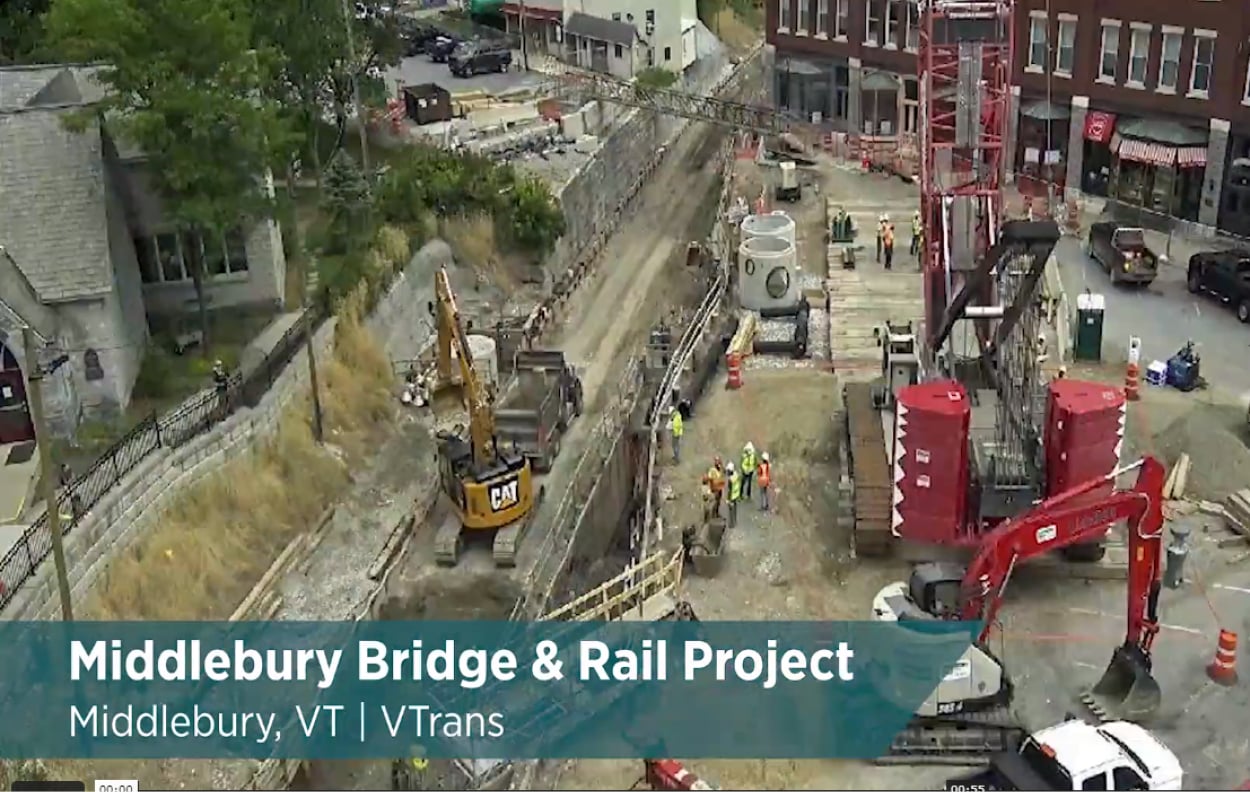
After a 10-week construction shutdown in the heart of downtown Middlebury, Vermont, the community gathered to celebrate the reopening of the Main Street and Merchants Row Bridges—a significant milestone in this $60M+ project, which has been supported by over 200 VHBers providing a suite of integrated services. As lead designer, VHB ushered the project through all phases of public outreach, permitting, design, and construction inspection.
The two nearly 100-year-old bridges carrying downtown traffic over the Vermont Railway had almost completely deteriorated and were deemed unsafe. The Vermont Agency of Transportation (VTrans), in partnership with the Town of Middlebury and the Federal Highway Administration (FHWA), decided to demolish the bridges and replace them with a single rail tunnel structure and retaining walls that extend north and south to accommodate the lower vertical profile.
The initiative began in 2013, and when fully complete, it will enhance mobility, improve safety, expand passenger rail and future freight rail services, create street and sidewalk improvements, and bring new and expanded park space above the railroad, better connecting public green spaces with the surrounding downtown. The tunnel will also enable an appropriate horizonal and vertical alignment to meet current railroad design standards and clearances. A key component of the railroad infrastructure is construction of drainage improvements that will reduce the risk of rain collecting on the tracks and wintertime icing problems.
This is the largest VTrans infrastructure project to date and takes place entirely within the National Register-listed Middlebury Village Historic District—a vibrant downtown core of shops, restaurants, parks, theaters, and other attractions for residents and tourists. The setting and scope of the project presented multiple resource challenges.
The complex environmental and cultural resource services provided by VHB included a fast-tracked Environmental Assessment as part of the NEPA process, studying the effects of the project on both the people who live and work in Middlebury, as well as environmental impacts to wildlife and habitat. The NEPA processes concluded with a Finding of No Significant Impact (FONSI). In addition, the project required a US Fish and Wildlife Section 7 Consultation to document potential project impacts on rare, threatened, and endangered bat species.
The public process, led by VHB, included a comprehensive community outreach and engagement program and mitigating construction-related impacts. The project team solicited input from Middlebury business owners and residents and developed transparent communications and multimodal transportation management plans aimed at minimizing impacts on the downtown area.
Following the NEPA process and public outreach, VHB structural and transportation engineers developed an innovative engineering blueprint that replaced both bridges with a single precast concrete tunnel structure and retaining walls consisting of over 400 individual precast pieces. Selection of appropriate engineering design criteria for a 170-year old railway corridor was a key component of the design. The design team had to balance community needs and character, local and regional mobility, and construction feasibility.
Due to the project’s complexity, it was selected as one of VTrans’ first projects to use Construction Manager/General Contractor (CMGC) project delivery. This allows the contractor to be selected during the design phase to provide input on schedule, cost, and constructability. This collaboration, with oversight from VTrans, creates a more efficient design with a reliable construction schedule.
To learn more, contact Aaron Guyette.


